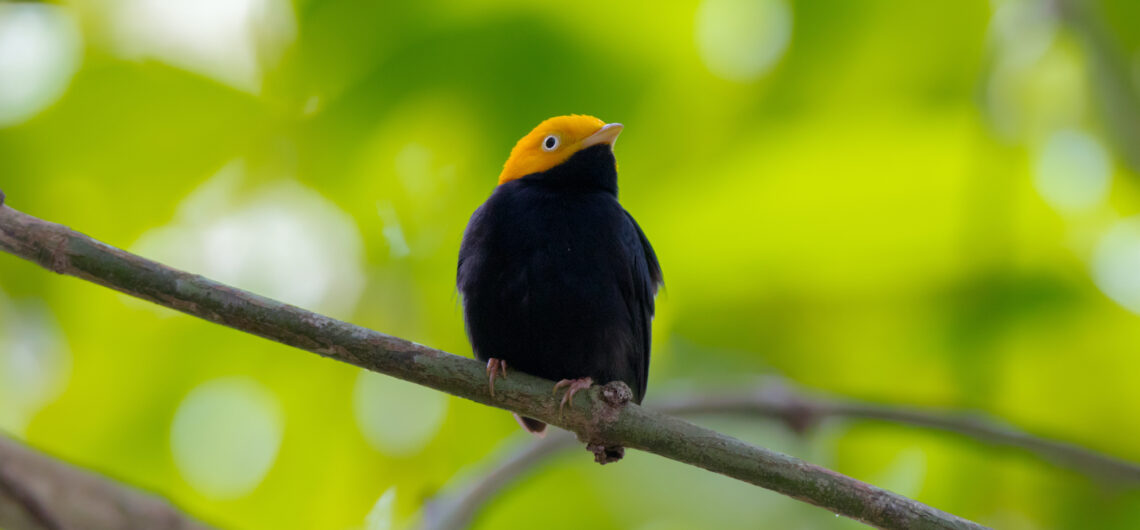Golden-headed Manakin
Ceratopipra erythrocephala
Male Golden-headed Manakins are immediately recognizable by their glossy black body and brilliant yellow head and white eye. Their yellow head may show a reddish rear border, and when displaying at a lek, males show off their red and white “pantaloons.” Females are greenish-olive in color. Like all manakins, Golden-headed Manakins are small (10 cm in length), plump birds with a very short tail. These manakins are found in the midstory to subcanopy of humid lowland forest and secondary woodlands throughout northern South America and eastern Panama. Golden-headed Manakins are primarily fruit eaters, and in particular, melastome specialists, preferring small berries of the genus Miconia and other understory plants. They also eat small insects and spiders when fruit is not abundant.
Males spend a great deal of time over their lives displaying at communal lek sites to attract females. One such lek site is located alongside one of our trails at the Canopy Camp! At a lek, 6 to 20 males or more gather in a concentrated area, and display on horizontal branches or vines free of foliage. The male’s lekking display is famously elaborate, involving a backward slide, or “moonwalk”, with the legs stretched upward and body bent forward and low. He also incorporates back-and-forth horizontal flights between his display perch and a nearby bough, an S-shaped flight of 20-40 m on a semicircular route, then swoops back to his display perch. His wings produce a humming sound in mid-air. Back at the perch, his wing and body movements reveal his attractive thigh coloration. Males give sharp chirping and trilling notes during their display. Displays by male Golden-headed Manakins are produced year-round, but activity level is increased during the main reproductive season. The nest is built by the drab female—a small, shallow and thin-based cup placed in a horizontal fork of a small understory tree, well-disguised with a few dead leaves covering the cup. Two eggs are laid, greenish-yellow with brown spots and streaks, and incubated exclusively by the female for 16-17 days. Like many manakins, Golden-headed Manakins are polygynous, and once mating occurs, males do not have any further involvement in the nesting process or parental care. In Panama and Colombia, the breeding season is during the dry season from December to April, but is possibly extended to August.
Close cousins: In areas of eastern Panama, the Golden-headed Manakin overlaps with its closely related congener, the Red-capped Manakin (Ceratopipra mentalis). Hybridization between these two species has been reported from their areas of sympatry. In such areas, an observer must pay close attention as females are very difficult to distinguish.

